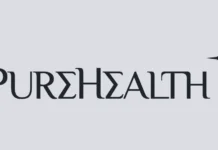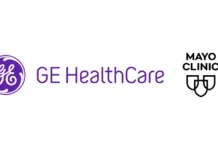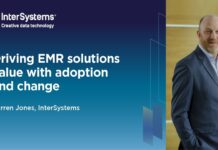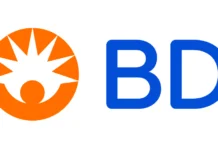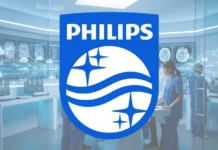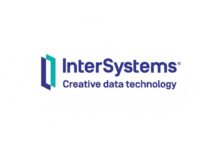Imagine being a hospital executive staring at a growing patient backlog— beds are open, demand is rising, and your newest physicians are ready to work. But they can’t. Not because they’re underqualified, but because the credentialing paperwork hasn’t caught up.
That’s the reality of medical credentialing in 2025: a bureaucratic bottleneck that keeps capable providers sidelined for weeks, even months. It’s not just frustrating for clinicians and administrators; it’s dangerous for patients.
Credentialing is the process of verifying a healthcare provider’s qualifications, including licenses, education, work history, malpractice records, and more. And while it’s essential for patient safety, the process itself has become a slow, fractured web of payer checks, hospital verifications, state board reviews, and manual data entry.
Even today, credentialing remains one of the most stubborn delays in healthcare operations. Most systems still take an average of 45 to 60 days to onboard new providers— depending on how many forms, departments, and verification steps are involved. In that time, physicians remain on payroll but off the floor, unable to see patients or generate revenue.
“It’s ironic. You can book a flight in 30 seconds, but onboarding a doctor takes three months,” said Harman Dhawan, CEO of Provider Passport, a new AI-powered platform designed to collapse the entire process into just seconds.
The consequences of these delays are more than administrative. According to a TechTarget report, credentialing lags can cost individual physicians as much as $122,144 in lost income per onboarding cycle — with orthopedic surgeons and cardiologists losing over $100,000 during similar delays. For hospitals, that translates into empty schedules, longer wait times, and overworked frontline staff. It’s a system choking itself with its own paperwork.
But now, AI may be poised to change that.
Speeding Up the Slowest Parts Of Credentialing
Provider Passport isn’t just a patch on a broken process. It re-engineers credentialing from the inside out— automating the slowest, most repetitive tasks using a proprietary AI engine called TruMation™.
Here’s what that looks like in practice: an administrator enters a provider’s National Provider Identifier (NPI), and within seconds, the system pulls from over 600 primary sources— state boards, insurer databases, sanction lists, medical schools— to auto-generate a verified provider profile. No paper packets, no fax machines, and certainly no two-week back-and-forth.
“You can’t afford to have new providers sitting on the sidelines for 60 or 90 days because of legacy workflows,”said Dhawan. “We’re not replacing credentialing—we’re collapsing the parts that waste the most time.”
Once the profile is live, the software assembles and submits all necessary credentialing, licensing, and enrollment packets automatically. It uses a proprietary mapping library covering more than 4,500 payer plans to pre-fill and file the right documents — whether that’s Medicare enrollment, commercial insurers, hospital privileges, or license renewals.
“Everything happens in one centralized workflow. Instead of juggling HR systems, enrollment forms, and credentialing vendors, Provider Passport routes each task through a unified platform, tracking approvals, verifying credentials, and surfacing any compliance flags — often without human input,” Dhawan noted.
3 Ways AI Is Reshaping Provider Onboarding
The old credentialing process was a scavenger hunt. Provider Passport turns it into a guided experience. Here’s what that transformation looks like in real terms:
1. Instant Profile Generation
With a single NPI number, administrators can trigger a full provider profile in under 60 seconds. The platform pulls data from 600+ verified sources to auto-generate resumes, credentialing packets, and background screens in real time.
2. Automated Submissions
TruMation™ doesn’t just compile documents; it completes them. The engine fills out payer forms, license applications, and privilege requests, tailoring submissions to match the unique requirements of each institution or plan. No more tracking down the “right version” of a form.
3. One System, End-to-End
All credentialing workflows — enrollment, privileging, verification, renewals — are unified in one secure platform. That eliminates duplicated effort, human errors, and system mismatches that usually delay approvals. In most cases, it’s as simple as one click. The platform handles the rest.
Why It Matters
This isn’t just about making things faster. It’s about unblocking the choke points that prevent healthcare systems from functioning at full capacity.
Credentialing is one of many administrative tasks in healthcare that’s ripe for intelligent automation. Others — like prior authorizations, medical billing, and scheduling — are already seeing early AI adoption, especially among revenue-cycle management (RCM) platforms. According to McKinsey, automation of back-office workflows could eliminate $200 to 360 billion in annual U.S. healthcare spending.
Provider Passport is part of that broader shift. And its impact is tangible. Every day a physician is stuck waiting for credentials is a day fewer patients are treated, a day fewer bills are paid, and a day more pressure piles up on already overstretched teams.
“We’ve seen hospitals lose weeks of coverage because of fragmented systems,” a hospital operations leader whose facility has been using Provider Passport shared. “With AI-driven tools like this, we’re finally starting to reclaim that time.”
The Future Of Credentialing
The promise of AI in healthcare often gets reduced to flashy headlines: diagnostic assistants, robotic surgeries, algorithmic triage. But some of its most powerful effects may come from the back office — from automating the slow, error-prone processes that eat up time and morale.
And while Provider Passport doesn’t replace the entire process, it compresses what once took weeks of manual work into seconds— auto-generating verified profiles, assembling packets, and launching workflows that used to delay go-live dates by months.
The result? Clinicians spend less time buried in paperwork and more time with patients. Hospitals reclaim revenue. And teams get back bandwidth.
“In an era where burnout is endemic, beds are full, and every second matters, that kind of efficiency isn’t just an upgrade. It’s a lifeline,” Dhawan said.






